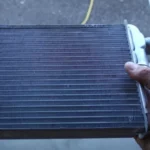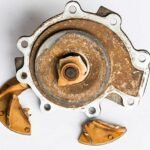
5 Signs You Have a Blown Head Gasket (and How To Prevent It)
Introduction
Having a blown head gasket can be a major headache for any car owner. It is a common problem that can lead to costly repairs if not addressed promptly. In this article, we will discuss the five signs that indicate you may have a blown head gasket and provide tips on how to prevent it from happening in the first place.
1. Overheating Engine
One of the most common signs of a blown head gasket is an overheating engine. If your temperature gauge consistently shows high readings or if you notice steam coming from under the hood, it is likely that the head gasket has failed. The head gasket plays a crucial role in maintaining the proper temperature of the engine by sealing the combustion chambers. When it fails, coolant can leak into the cylinders, causing overheating.
2. White Smoke from the Exhaust
If you notice thick white smoke coming from your exhaust pipe, it is a clear indication of a blown head gasket. This happens when coolant leaks into the combustion chambers and gets burned along with the fuel. The result is the formation of white smoke that is easily distinguishable from the normal exhaust fumes. If you observe this symptom, it is important to have your head gasket inspected and repaired as soon as possible.
3. Milky Oil
When a head gasket fails, coolant can also mix with the engine oil, resulting in a milky appearance. If you check your oil dipstick and notice a creamy or frothy consistency, it is a strong indication of a blown head gasket. This mixture of coolant and oil can severely affect the lubrication properties of the oil, leading to engine damage if not addressed promptly.
4. Loss of Engine Power
A blown head gasket can cause a loss of engine power and overall performance. This is due to the leakage of combustion gases from the cylinders, which disrupts the proper functioning of the engine. If you notice a significant decrease in acceleration or if your car struggles to maintain speed, it is advisable to have your head gasket checked by a professional mechanic.
5. Bubbles in the Radiator
If you suspect a blown head gasket, you can perform a simple test by inspecting the coolant in your radiator. Start your engine and let it run for a few minutes. If you notice bubbles forming in the coolant, it indicates the presence of exhaust gases, which is a clear sign of a blown head gasket. This test should be done with caution, as the engine can become hot during the process. If you are unsure, it is best to consult a mechanic.
Prevention Tips
While a blown head gasket can occur due to various factors, there are preventive measures you can take to minimize the risk:
- Regularly check and maintain proper coolant levels.
- Monitor your engine temperature and address any overheating issues promptly.
- Follow the manufacturer’s recommended maintenance schedule.
- Avoid excessive strain on your engine, such as aggressive driving or towing beyond the recommended limits.
- Have your cooling system inspected and serviced regularly.
Conclusion
A blown head gasket is a serious issue that can lead to significant engine damage if not addressed in a timely manner. By being aware of the signs and symptoms, you can catch the problem early and prevent further complications. Additionally, following the preventive tips mentioned in this article can help minimize the risk of a blown head gasket and ensure the longevity of your engine.




